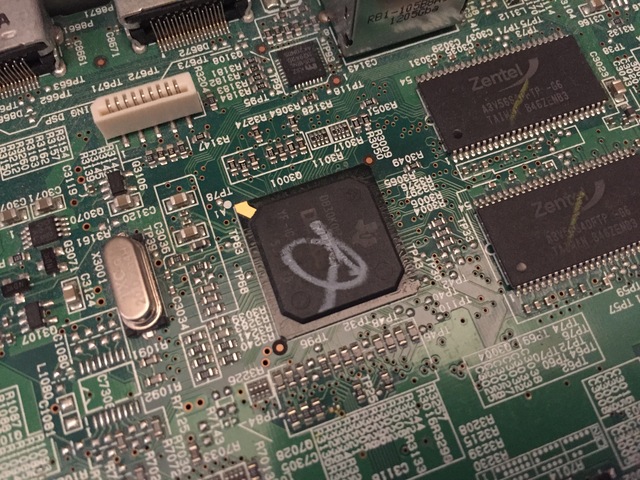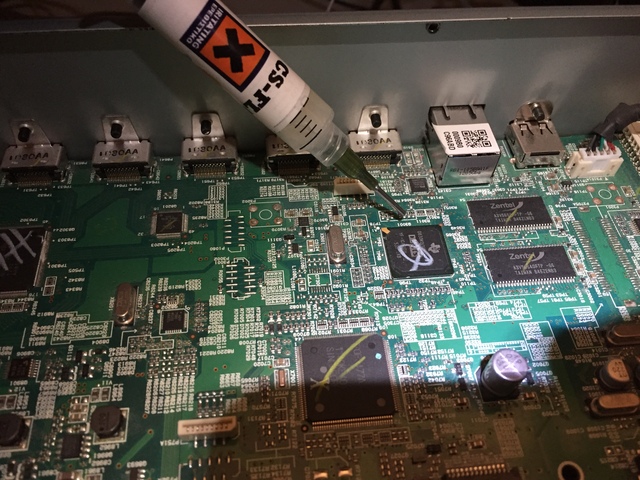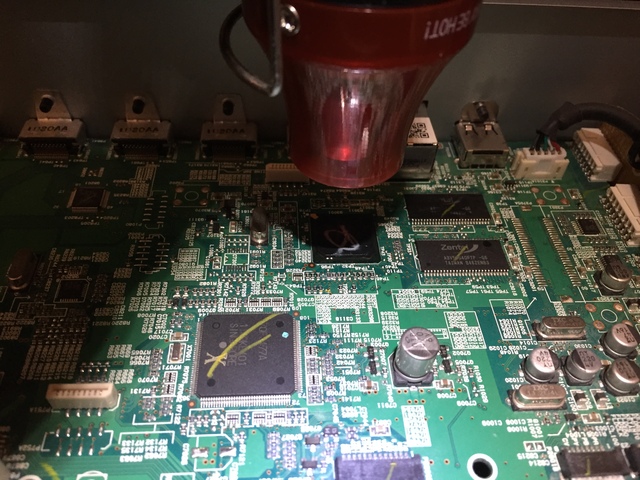Reballing my ONKYO TX-NR515
I bought an audio/video receiver, an ONKYO TX-NR515, 10 years ago, and it recently developed a bad case of “no sound”. Though it’s not a high-end receiver, it’s fulfilling my needs, and I was not planning to replace it anytime soon.
After digging a bit, it looks like it’s a common issue for that generation of ONKYO AV receivers. The problem seems to be that, with time and heat, the DSP chip soldering got weak.
First, let’s make sure the problem does not lie somewhere else:
Reset the unit by holding
ON/STANDBYandCBL/SATbuttons, the display will showCLEARthen the unit wil turn off. This didn’t solve the issue on my amplifier, so it’s not some settings that could have gone wong.Try analog only. Interestingly, you really need to wait until the menu disappear to have this to work. After following that procedure, my unit can output analog audio from the radio. So it’s not an electrical issue like relays or the amplifying circuits.
Looks like the solution will be to reflow/reball the DTS chip… sounds scary. The DTS chip is in a BGA package, meaning all the connectors are in a grid under the chip. The idea is to manage to put flux under the chip and then heat it so the connectors melt and reposition themselves properly.
Interestingly, there are a lot of more of less “professional” videos showing just that:
- heating the chip with a light bulb
- flux, airgun, infrared thermometer then adding a heat-sink
- similar as the previous one
- professional reballing with all the right tools
As described in this repair, I like the idea of using the USB port at the back of the unit to power small fans inside to prevent further damage after fixing the problem.
Anyway, I gave it a try:
After the operation, the situation is better but not fixed. Quite often I have to start the receiver a couple of times before getting any sound, it’s already quite an improvement. I think I didn’t put enough heat on it. In the future, if the situation degrades, I’ll do it again with a bit more heat, then add a heat-sink and maybe a fan.
Update 2023/10/25: the fix didn’t last long, a couple of months before I had to do it again, and it lasted even less ☹️.




